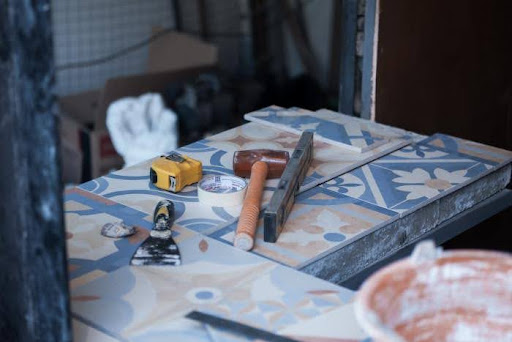Grout serves as the indispensable supporting actor between the shining ceramic, porcelain, glass, or stone tiles that steal the show on kitchen backsplashes, bathroom floors, and other dazzling tile installations throughout homes and buildings.
Though grout lines play a subtle role, their integrity and appearance directly impact the visual appeal and functionality of tile floors and walls. Cracked, dirty, or discolored grout lines can diminish the aesthetic beauty of even the most stunning tile layouts and meticulous designs.

Just as concerning, damaged or missing grout can compromise the structural soundness and durability of tile installations, allow leaks, and enable staining or growth of mold. Here are some tips on how to properly maintain them:
- Develop a Maintenance Routine – Whether you’re drying your walls or spraying them with vinegar, your grout will still need to be cleaned on a regular basis, especially in high traffic areas on the floor. Use a microfiber cloth to sweep daily, mop the area weekly and scrub grout regularly to keep it in good condition. High traffic areas on the floor may need to be scrubbed with cleaner once per month, while low-traffic areas may need scrubbing only once or twice per year.
Some people recommend spraying the walls of your shower with a 1:1 vinegar and water solution. Vinegar has a drying effect and also kills bacteria. Spraying your shower with vinegar on a regular basis can help prevent the growth of mold and mildew. Source: South Bay Residential
- Trouble areas – When maintaining grout, be aware of any trouble areas and inspect them regularly. Trouble areas in the bathroom include the rim of a bathtub, taps, tap covers, shower windows, soap dishes, shower doors and the shower base. It is recommended to check these areas at least once a month for any missing or cracked grout.
Trouble areas in outdoor grouting including anywhere that is consistently damp, areas near water features and grouting in the corners of adjoining walls. If you do notice grout damage, attend to it right away. A small crack in the grout can lead to a large hole, which can result in an expensive repair. Source: Bellstone
- Baking soda and vinegar
The chemical reaction caused by mixing baking soda and vinegar can help to break down tough stains and stubborn grime. Here’s how you can use these items to clean your grout:
- Make a paste using 2 tablespoons of baking soda and 1 teaspoon of water.
- Prepare a mixture consisting of 1 cup of distilled white vinegar and 1 cup of warm water and pour it into a spray bottle.
- Apply the paste to the grout, then spray the vinegar mixture onto it. You should see the baking soda starting to foam.
- When it stops foaming, scrub the area with a brush and rinse it with some warm water.
- Dry the area with a dry cloth.
- Hydrogen peroxide – Hydrogen peroxide is an effective solution that can be applied directly to the grout to remove moderate stains.
You can also create a paste by mixing a teaspoon of hydrogen peroxide with 2 tablespoons of baking soda. Apply the paste to the grout and allow it to sit for 5 minutes before wiping it away with a damp cloth. Source: Selleys
If you take good care of your grout, there’s no doubt that your tiles will also benefit from it. For those who need professional care for their grout and flooring in general, don’t hesitate to give us a call!


